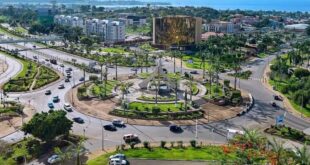Abandoned e-blocks Saga: The Bitter Truth!
The NPP government’s strategy for expanding secondary education is based on the already existing 70% boarding and 30% day strategy where it is largely expanding infrastructure in already existing schools, majority boarding.
Prior to its exit from government, the NDC had a vision to expand access to secondary education through the community day approach, where it was constructing Community Day Schools, with some 124 commencing with a World Bank loan.
The clash of these two different approaches suggests only 30% of the NPPs focus will be on expanding or completing day schools, including Mahama’s e-blocks.
With 29 completed over five years, the remaining do not appear to be the priority of government, as the source of funding and relevance remains uncertain.
The $1.5 billion loan obtained to undertake Free SHS infrastructure expansion is not tilted towards e-blocks, but rather existing schools (majority boarding) and some new ones.
What we are confronted with today is the lack of cross-political buy-in on a paradigm shift to a major national strategy to expand secondary education along the community day approach, which was/is great, per the examples in Argentina, South Africa etc..It could reduce free SHS re-current expenditure by at least half. But there was no consensus between the two parties destined to rule. If both parties acquiesced, we wouldn’t be wallowing in this quagmire of resource waste today.
The reality is, going by government’s strategy, 70% of the e-blocks are now useless in the short to medium term, as there are even more spaces on the computer through the ongoing 70:30 Boarding-Day expansion of existing SHS.
Economically, considering most operational e-blocks are operating under capacity due to location and lack of demand, completing many remain a risky venture in a sector where 5,000 basic schools continue to exist under trees and 4,000 primary schools without a JHS partly due to the over concentration of infrastructure funding on SHS to the detriment of basic since 2018.
Given the current secondary education expansion strategy, completing all e-blocks in the short-medium term will be tantamount to scarce resource misallocation and duplication, once there is space for admitting all SHS applicants.
The argument that completing e-blocks will end Double-Track is overly simplistic. As i keep saying, Double Track is a function of Demand and Supply. You end it by increasing facilities in schools with high demand; not undersubscribed e-blocks like Moree SHTS where 900 are attending a school with capacity to enroll over 1200.
While what we are crying about today is the symptom of a problem created yesterday, my greatest fear is, by also not securing the NDC’s buy-in on the current secondary expansion approaches, we may have to brace ourselves for another symptom focused discussion tomorrow, of a problem being created today.
Governance is a continuum; but consensus is the fuel. Lets build political consensus on major strategies for continuity.
At the end of the day, the tax payer suffers the loan repayment for the abandoned projects.
This is the reality’!
By Kofi Asare, Executive Director, Africa Education Watch.
 Savannah News Online Reporting Only What Matters Most
Savannah News Online Reporting Only What Matters Most



